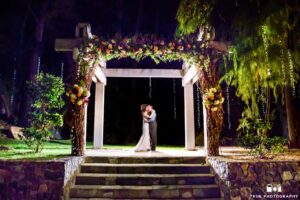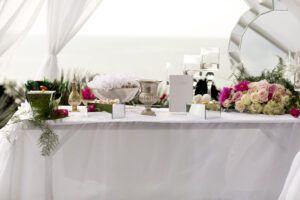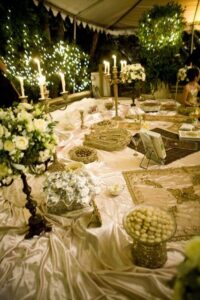We work with a wide variety of cultures, and appreciate the nuances and joy inherent in all the traditions observed. Many of our weddings are Jewish; the chuppah structure symbolizes many things and has throughout the years, but nowadays it adds a sense of protection, a sense of starting a home together, for the bride and groom standing beneath it. Often the chuppah is freestanding, but friends and family have also carried it in and held in place as well.
On the table underneath the chuppah, are several symbolic elements: The kiddush cup, a prayer shawl (tallit), and an item many of all cultures will recognize, a glass to stomp at the end of the wedding. Many interpretations exist, but one that I particularly like is that life is fragile and imperfect, and to never take for granted your life with your loved one. (More explanations can be found here.)
A significant amount of the weddings we plan and coordinate are Persian, and one of the most stunning elements to a Persian wedding is the Sofreh. This table or display of various ceremonial elements can be simple, modern, or luxurious and ornate.
Each couple’s interpretation of their culture is what makes each ceremony unique. It’s a fascinating part of what we do and another reason why wedding planning is such a meaningful job!




